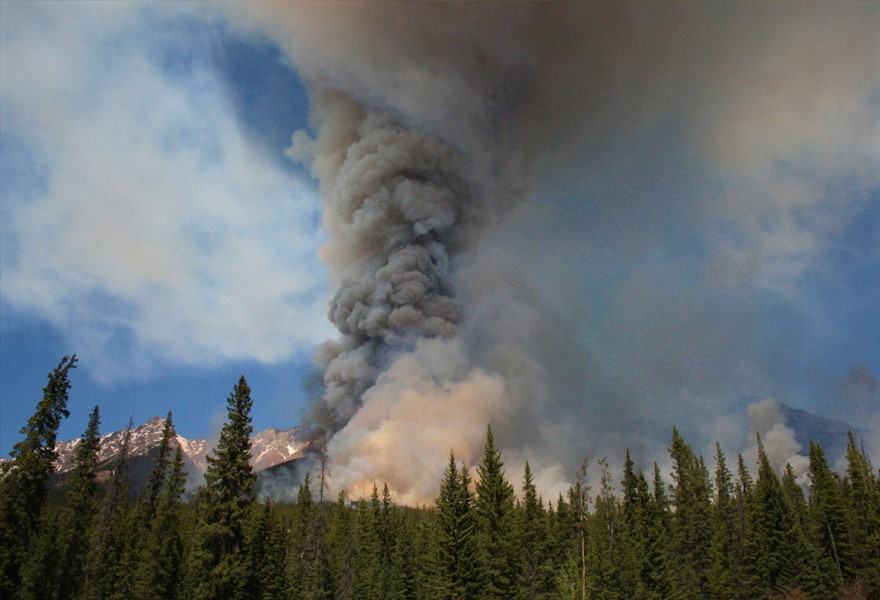May 2022
On a beautiful spring day, it might be hard to imagine this is the calm before the storm. But wait. While Canada’s wildland fire season is off to a relatively quiet start, it could all change over the summer according to seasonal forecasts from Natural Resources Canada’s wildland fire research team.

Atmospheric information gives Canada’s wildland fire researchers a general idea of seasonal fire weather severity. (credit: Lynn Johnston)
Not quite an exact science
Making seasonal predictions months in advance is a tiny part art and many, many parts science. No one knows this better than Richard Carr, NRCan wildfire research analyst.
"Wildfire seasons are difficult to forecast because there are so many random variables," he says. "Yet wildfire managers — experts at the regional and local levels who respond to fires and try to manage resources — rely on forecasts to help make long-range decisions."
Technology has changed since Richard started at NRCan as a summer student 25 years ago. Back then, he was one of two trained meteorologists on site, so he was often called on to provide impromptu weather forecasts.
From ad hoc weather reports to a growing and vital team
Those reports proved so valuable that the Canadian Interagency Forest Fire Centre asked for custom forecasts to help with their preparedness planning. Now Richard is part of a growing team that issues weekly, monthly and seasonal forecasts during Canada’s fire season, which typically runs April through September.
The process begins as early as February, when the team starts looking at environmental factors. They assess the depth of snowpack, estimate when the snow might melt, monitor drought conditions and calculate how much precipitation fell over the winter. This information gives them a sense of what’s happening at ground level.
A series of maps showing predictions for Canada's fire weather severity, summer 2022.
The powerful effects of El Niño and La Niña
They also look at what is happening far above the earth's surface and factor in climate and atmospheric conditions. For instance, is it an El Niño or La Niña period? Strong episodes of either phenomena can increase spring fire activity in Western Canada, while other ocean and atmosphere interactions may influence fire risk in other parts of the country. El Niño and La Niña events also usually affect the position and strength of the jet stream — the narrow strips of high winds that flow west to east across our country more than 10 kilometres above the earth's surface. These powerful winds can have a huge impact on climate by separating cooler air from warmer air and pushing air masses around.
Finally, the team folds in forecasts from two climate models developed and run by Environment and Climate Change Canada, which use data collected about the state of the atmosphere, sea surface temperature and sea ice. All of this atmospheric information gives Canada’s wildland fire researchers a general idea of seasonal fire weather severity.

Wildland fires consume an average of 2.5 million hectares a year in Canada, equivalent to about half the area of Nova Scotia.
Measuring the human impact
Richard is careful to point out that while NRCan’s seasonal forecasts can help present predictions of fire weather severity, they don’t reveal how many fires there will be in any one year or how devastating they might be.
How a fire season unfolds in reality depends largely on human behaviour. It’s true that many wildland fires are caused by lightning strikes, but slightly over half of them are the result of human activities such as careless use of campfires, leaving recreational vehicles to idle in dry vegetation and discarding cigarette butts.
To put things in perspective, while it looks like things could heat up this summer, the fact is every fire season carries risks.
"Fires still occur even in average seasons, and the potential for damaging fires always exists," says Richard. "There's technology and science to predict fire seasons, but we can't predict exactly how they're going to play out. No one can."